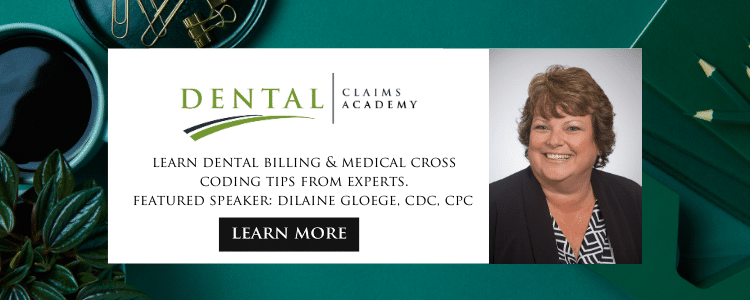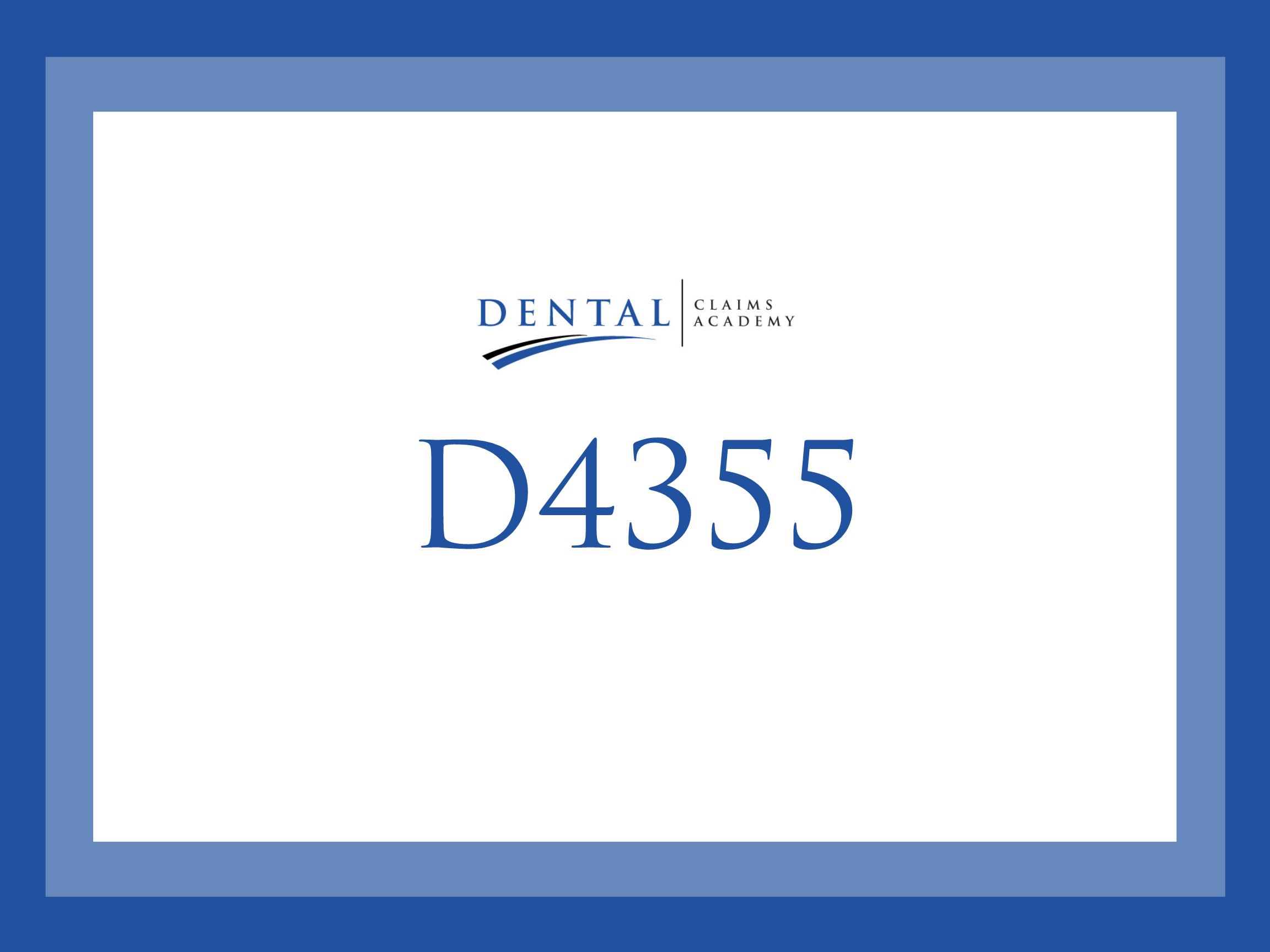A periodontal charting and probing is necessary to make a diagnosis. D4355 is not intended to be a preliminary procedure prior to perio therapy, a common coding error seen. The intent is to perform a full mouth debridement to enable a comprehensive oral evaluation.
In 2018, CMC revised this code nomenclature to make it clear that a comprehensive oral evaluation and diagnosis is performed at a subsequent visit. Let’s look at the nomenclature and descriptor of D4355 for clarity of the definition and intended use of the code.
D4355 full mouth debridement to enable a comprehensive oral
evaluation and diagnosis on a subsequent visit
Full mouth debridement involves the preliminary removal of plaque and calculus that interferes with the ability of the dentist to perform a comprehensive oral evaluation. Not to be completed on the same day as D0150, D0160, or D0180.
So, what can you report at the first visit? An assessment of the patient must be performed by the dentist
to determine that an evaluation and diagnosis cannot be completed, and a full mouth debridement is
necessary. Consider D0191 assessment of a patient.
Code D4355 Patient Scenario:
Ms. Jones presents as a new patient to the practice requesting a checkup. Ms. Jones stated it has been 8 years since her last dental exam and cleaning. The patient’s blood pressure was taken and her medical and dental history was reviewed. No health issues were noted. An assessment noted heavy generalized plague and large amounts of calculus creating a calculus bridge covering the lower anterior teeth.
Dr. Smith’s findings are that a comprehensive oral evaluation with a diagnosis cannot be performed and recommends a full mouth debridement for today’s visit.
The hygienist performed a debridement of the supragingival plaque and calculus using an ultrasonic scaler. Oral hygiene homecare instructions were given, and chlorhexidine rinse was dispensed to the patient.
Patient was instructed to expect bleeding and generalized inflammation as the tissue to heals from the procedure today.
Patient to return to clinic in 2 weeks for comprehensive oral evaluation.
How is the D4355 dental visit coded?
An assessment of the patient was performed. An assessment is a limited clinical inspection per the descriptor as indicated below. The assessment revealed that a comprehensive oral evaluation with a
diagnosis could not be completed for our scenario; therefore it is appropriate to report D0191. Additionally, home care instructions and the medicament dispensed for home use may also be reported.
D0191 assessment of a patient
A limited clinical inspection that is performed to identify possible signs of oral or systemic disease, malformation, or injury, and the potential need for referral for
diagnosis and treatment.
D1330 oral hygiene instructions
This may include instructions for home care. Examples include tooth brushing technique, flossing, use of special oral hygiene aids.
D9630 drugs or medicaments dispensed in the office for home use
Includes, but is not limited to oral antibiotics, oral analgesics, and topical fluoride; does not include writing prescriptions.
Dental Claim Reimbursement Tips for Code D4355
Many dental plans will not provide reimbursement for D0191 and a PPO contract may deem it as non-billable to the patient.
D1330 benefits vary greatly by plans.
D9630 is allowed by some plans. While D9630 is not a “by report” code requiring a narrative it is helpful to provide a narrative indicating the medicament dispensed and the reason it was prescribed for the patient for home use.
Regardless of reimbursement or lack thereof, be sure to code what you do.

Related Posts
Dental revenue resources from Dental Claim Support


